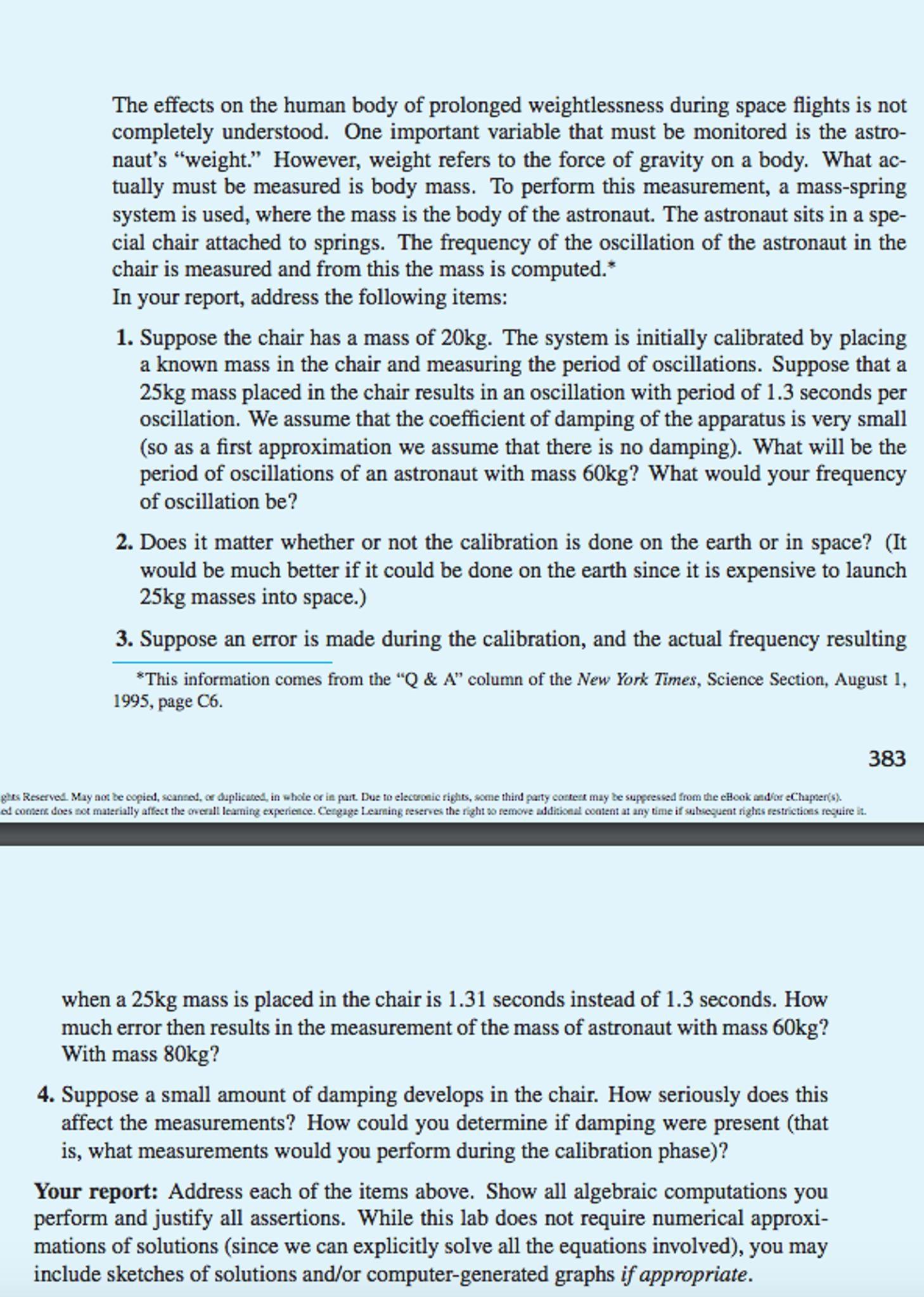Answered step by step
Verified Expert Solution
Question
1 Approved Answer
The effects on the human body of prolonged weightlessness during space flights is not completely understood. One important variable that must be monitored is

The effects on the human body of prolonged weightlessness during space flights is not completely understood. One important variable that must be monitored is the astro- naut's "weight." However, weight refers to the force of gravity on a body. What ac- tually must be measured is body mass. To perform this measurement, a mass-spring system is used, where the mass is the body of the astronaut. The astronaut sits in a spe- cial chair attached to springs. The frequency of the oscillation of the astronaut in the chair is measured and from this the mass is computed.* In your report, address the following items: 1. Suppose the chair has a mass of 20kg. The system is initially calibrated by placing a known mass in the chair and measuring the period of oscillations. Suppose that a 25kg mass placed in the chair results in an oscillation with period of 1.3 seconds per oscillation. We assume that the coefficient of damping of the apparatus is very small (so as a first approximation we assume that there is no damping). What will be the period of oscillations of an astronaut with mass 60kg? What would your frequency of oscillation be? 2. Does it matter whether or not the calibration is done on the earth or in space? (It would be much better if it could be done on the earth since it is expensive to launch 25kg masses into space.) 3. Suppose an error is made during the calibration, and the actual frequency resulting *This information comes from the "Q & A" column of the New York Times, Science Section, August 1, 1995, page C6. 383 ghts Reserved. May not be copied, scanned, or duplicated, in whole or in part. Due to electronic rights, scme thind party costent may be suppressed from the eHook andfor eChapter(s). ed coment does not materially affect the overall leaming experience. Cengage Learning reserves the right so remove additional content at any time if subsequent rights restrictions require it. when a 25kg mass is placed in the chair is 1.31 seconds instead of 1.3 seconds. How much error then results in the measurement of the mass of astronaut with mass 60kg? With mass 80kg? 4. Suppose a small amount of damping develops in the chair. How seriously does this affect the measurements? How could you determine if damping were present (that is, what measurements would you perform during the calibration phase)? Your report: Address each of the items above. Show all algebraic computations you perform and justify all assertions. While this lab does not require numerical approxi- mations of solutions (since we can explicitly solve all the equations involved), you may include sketches of solutions and/or computer-generated graphs if appropriate.
Step by Step Solution
★★★★★
3.34 Rating (163 Votes )
There are 3 Steps involved in it
Step: 1

Get Instant Access to Expert-Tailored Solutions
See step-by-step solutions with expert insights and AI powered tools for academic success
Step: 2

Step: 3

Document Format ( 2 attachments)
635e03f69cd73_180755.pdf
180 KBs PDF File
635e03f69cd73_180755.docx
120 KBs Word File
Ace Your Homework with AI
Get the answers you need in no time with our AI-driven, step-by-step assistance
Get Started


